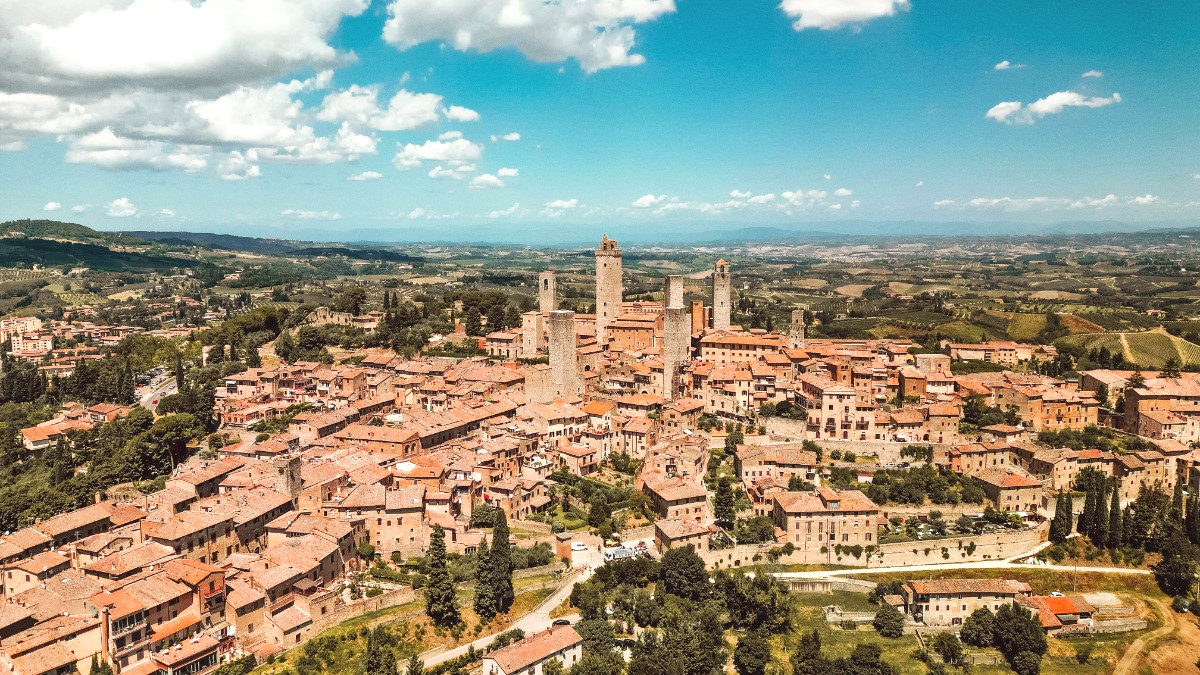
Tuscany, Italy
Tuscan food celebrates simplicity and relies on high-quality, locally sourced ingredients. Historically, it developed from a peasant cooking tradition, making resourceful use of whatever was available from the land. This approach led to dishes that are wholesome, flavorful, and hearty.
The region's olive oil, bread, legumes, and various meats form the backbone of the cuisine. San Gimignano, situated in a fertile agricultural area, naturally follows this tradition, with an added focus on its unique local products like saffron and Vernaccia wine.
The town's historical connection to saffron cultivation is strong. Look for dishes incorporating saffron, like saffron risotto, saffron pasta, or even saffron-infused gelato.
This crisp, dry white wine is produced only in the vineyards around the town. Enjoy it as an aperitif or with fish and light pasta dishes.
Due to the abundance of wild boar in the Tuscan forests, cinghiale dishes are a staple in San Gimignano.
Hearty Tuscan soups made with tomatoes, stale bread, or various vegetables and beans.
Rustic and flavorful, a true taste of "cucina povera."
A thick-cut, large T-bone steak, typically from Chianina beef, grilled rare and seasoned.
A dish for sharing, simply prepared to highlight the meat's quality.
Wild boar ragu with pappardelle, or thick hand-rolled pici pasta with a potent tomato-garlic sauce.
Hearty local specialties that reflect the region's produce.
Hard almond biscuits (cantucci) for dipping in Vin Santo, and dense Sienese fruit/nut cake (panforte).
San Gimignano is famous for its award-winning gelaterias. Look for "Gelateria Dondoli."
Upscale Tuscan cuisine with refined menus and extensive wine lists. Expect a sophisticated atmosphere and higher prices.
Authentic regional dishes in casual, welcoming, often family-run settings. Excellent pasta, meat, and local specialties at reasonable prices.
For quick, inexpensive meals. Pizza al taglio, paninerie, and small cafes offer grab-and-go lunch options.
San Gimignano has a weekly market on Thursdays (Piazzale dei Martiri di Montemaggio). Find fresh local produce, cheeses, cured meats, and other specialties.
Ideal for assembling a picnic or experiencing local commerce.
Throughout the town, small shops sell local delicacies, from saffron products to olive oil and wine. Great for souvenirs or immediate consumption.
Support local producers directly.
The focus is predominantly on traditional Tuscan and Italian fare.
For diverse global flavors, larger cities like Florence or Siena offer more options.
No specific "international food" districts exist.
Any international presence will be individual restaurants.
Halal and kosher options are very limited in San Gimignano.
Larger cities might have specialized restaurants.
You will need to plan carefully, possibly focusing on vegetarian or fish dishes and checking ingredients.
Self-catering might be the best option.
For lactose-free ("senza lattosio") or other specific allergies, communication is . Italian menus often detail ingredients, but asking is always best.
Use translation apps or carry a dietary translation card. This card clearly states your dietary restrictions in Italian, helping you communicate with restaurant staff.
Learn to prepare traditional Tuscan dishes from pasta making to local sauces. Many cooking schools and agriturismi offer these.
Guided walks through town often include stops for tastings of local products.
Seek out local artisans for small workshops in ceramics, leather working, or other traditional crafts.
Many agriturismi offer homemade, farm-to-table meals, sometimes exclusively for guests or by reservation.
A rustic, charming setting for authentic Tuscan food.
Wine bars offer extensive selections of local wines by the glass or bottle, often with platters of local cheeses and cured meats.
Good for an aperitivo or a light dinner.
Celebrates San Gimignano's renowned white wine, usually with tastings and events.
Highlights the delicate local saffron production, often with special dishes and markets.
The "Ferie delle Messi" in June brings history to life with parades, jousting, and costumed participants.
Eating where locals eat often guarantees authenticity and good value. Look for busy spots off the main tourist paths.